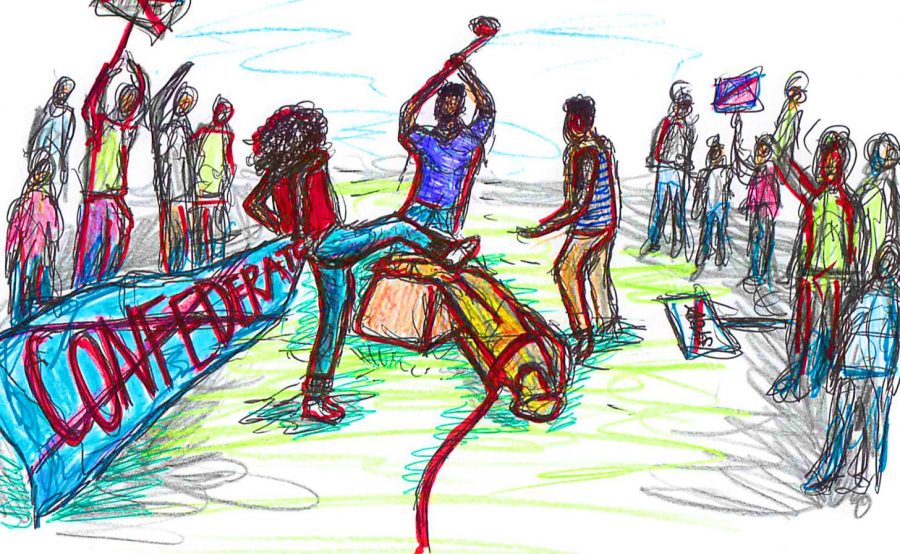The specter of offensive Nazi iconography on American streets has become a lightning rod for the larger issue of how America memorializes its history, how it portrays both the perpetrators and the victims of its worst moments, and how it remembers, honors, and memorializes its African American, Native American, and other minority citizens. In recent months, the nation has begun a debate over the removal of confederate monuments, as well as other statues commemorating individuals who have perpetuated offensive ideologies. It is now indisputable that the country cannot subjugate such groups. However, action regarding this issue has become increasingly inadequate. And as New Mexicans, we have a unique perspective on the issue. We live in a diverse state with many Hispanics and Native Americans, as well as Anglos. Despite our history, not only does New Mexico have statues honoring the confederacy, but also several statues of conquistadors.
Some people oppose the removal of such monuments by arguing that eradicating the statues would erase history, and they further claim that the statues spark interest in learning about the history of the person depicted. However, such statutes primarily serve to glorify the people represented by memorializing them. Furthermore, had the statues truly served solely historical purposes, then they would be in museums where one could learn the relevant history associated with the events, rather than placed outside to glorify pro-slavery soldiers, or others now out of favor. The removal of the statues is rather a way to remove the idea of subjugation, and the humiliation of historically repressed races.
Take the case of pro-Confederate statues. The sad truth is that while these statues were erected to commemorate Confederate soldiers, most of the statues were actually put up post-civil war when black terror was commonplace throughout the South. The largest number of statues were put up during the Jim Crow era when, apart from the black codes, lynchings of African Americans were commonplace, and white supremacist groups like the Ku Klux Klan were at their height. These statues were erected to physically symbolize the white terror against blacks–to remind blacks that although they may be able to obtain legal equality, they will forever be second class citizens. .
Previously in New Mexico, people have vandalized statues of conquistadors. Emulating what Don Juan de Oñate did at Acoma Pueblo in 1598, almost 4 centuries later the foot of Oñate’s statue was cut off and removed. Such actions have revived the debate over Oñate’s actions, who himself killed many Native Americans and was criticized for abusing power as the governor of New Mexico. Some admire his pageantries, while others take a closer look at the brutality of his conquest. There are those who argue that vandalizing statues may drive a divide between people who live side by side, while others argue that the state should address the persistent racism.
The controversy regarding statues revolves around how we remember our history and memorialize the victims of imperialism and oppression as well as the perpetrators of actions that are now considered immoral. Locally, we find this controversy in not only confederate statues, but also conquistador statues. While the issue has yet to resolve, it seems apparent that Americans should remove the statutes to address America’s past and assert that racism and oppression are not what we memorialize.








